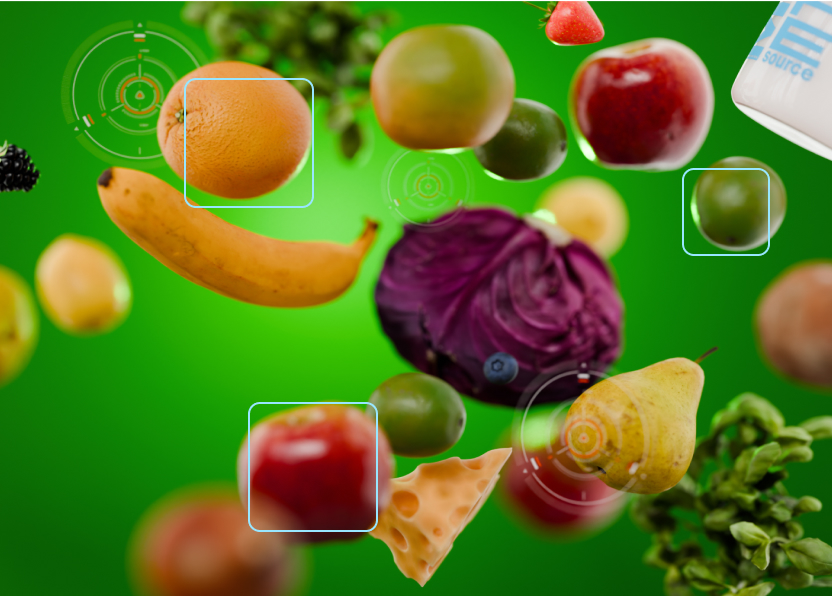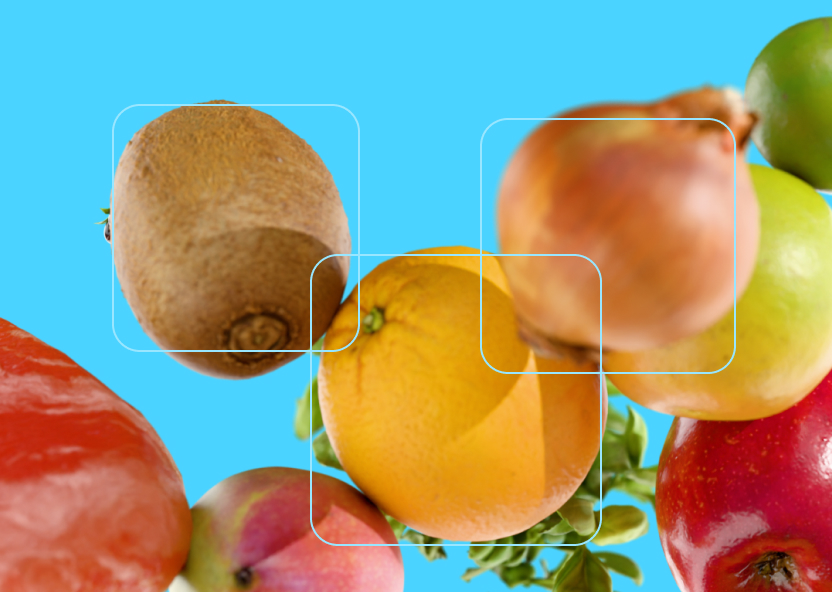Maximizing Seasonal Revenue in Fresh Produce: a Multi-Faceted Challenge
- Quality Control App

Seasonal fluctuations impact every aspect of the fresh produce industry, from availability to pricing. A bad season can wipe out profits, while an oversupply can drive prices down, leaving growers and distributors scrambling to stay profitable.
Seasonality is a wild card from the point of view of profitability. Cruel summers, bitter winters, and freak weather events are all beyond anyone’s control. What fresh produce businesses can and should control is their fresh produce management. In an unpredictable world, every system for produce inspection, inventory management and post-harvest handling should be geared towards making the best of every eventuality.
The only way to achieve that is by standardizing produce inspection across the fresh produce supply chain through intelligent automation.
In this article, we explore the impact of seasonality, and the role of AI-powered quality assurance in produce management and supply chain optimization.
The Profit Rollercoaster: Making Predictions in a Multi-Variant World
For fresh produce businesses, all the inputs to the profit formula are in permanent flux. This makes it uniquely challenging to accurately forecast revenue and plan in a way that maximizes profits.
Here are some of the most serious challenges businesses face when it comes to managing seasonal change.
Seasonal Supply and Demand Variations
Many fresh produce categories are highly seasonal, on both sides of the ledger. For some, availability fluctuates throughout the year, while others that are generally available may see demand spike at certain times of year.
At one extreme, cherries have a short growing window and are only available fresh for a few months. This makes their supply highly volatile. On the other hand, pumpkins are available for longer but see demand spike almost exclusively in the fall, leaving them largely unwanted the rest of the year.
For growers and retailers, both of these are less than ideal. A seasonal shortage may mean higher prices, but it also means disappointed retail who may not get the produce they had hoped for. And an overstock can push prices dangerously low for retailers.
Weather Impact on Quality and Yield
Extreme weather events like droughts, heatwaves, and storms can be catastrophic for yields. Recent Spanish heat waves cost growers up to 70% of their stone fruit yield. This causes wide fluctuations in both the frequency of shipments and the quality of the end product. The result is higher rejection rates, more waste, and mounting costs that pose a serious threat to the business continuity of businesses in the supply chain.
As climate change progresses, hot summers and cold winters will become even harder to manage, and their effects may be even more dramatic.
Market Price Fluctuations
Price is another volatile factor to consider in the wholesale produce and retail markets. Seasonal promotions can lead to price wars, in which retailers initiate in a race to the bottom, the costs typically fall on farmers and growers – the exact part of the supply chain that’s under the most direct pressure from weather events, as we saw earlier.
Last year In the UK, supermarkets engaged in this type of behavior, aggressively discounting Christmas vegetables, offering items like carrots and potatoes at significantly reduced prices. While consumers benefit, these practices can devalue produce and strain growers’ finances.
Storage and Shelf-Life Challenges
Without proper post-harvest handling and inventory management, a significant portion can be lost before ever reaching consumers. During seasonal peaks, when harvest volumes surge, storage facilities often reach capacity, increasing the risk of spoilage. Without real-time tracking and strategic distribution, businesses may face financial losses due to unsellable stock. Efficient quality control systems, like those provided by Clarifresh, help mitigate these risks by enabling real-time monitoring, optimizing storage decisions, and reducing waste.
Labor Costs and Availability
The cost and availability of labor present another critical challenge during peak harvesting seasons. Labor shortages often drive up wages as farms and warehouses compete for a limited workforce. Additionally, inefficiencies in manual sorting and quality inspections can further inflate costs, slowing down operations and reducing overall productivity.
By integrating AI-driven quality control solutions, businesses can streamline inspections, reduce reliance on manual labor, and ensure that only the best produce moves through the supply chain. Automating key processes not only lowers costs but also enhances efficiency, allowing businesses to handle seasonal surges more effectively and maximize revenue.
Reducing Complexity With Standardized Inspections
Some of the damage that seasonal variability causes is inevitable. But for businesses in wholesale produce distribution, inefficiencies in quality control can amplify these challenges.
In a situation where every piece of produce counts, such as a regional shortage, manually assessing palettes makes a bad situation worse. Firstly, these human-led inspections take time to complete. That’s time that nobody can afford, because produce is continually degrading. The longer it takes to complete inspections, the greater the likelihood that the customer will receive produce that’s closer to the end of its shelf life.
Secondly, even with well trained and experienced inspectors, subjectivity and variability make it difficult to impose uniform standards across a single warehouse, let alone an entire supply chain. On top of delivering inconsistent results, these inspections also aren’t scalable. They have to be done repetitively, in the same way, multiple times a day – and there is no reliable way to improve.
AI-Powered Standardization is Transforming Quality Control Management for the Better
The good news is that AI and machine learning technology offer a way to automate away all of this variability, and bring quality control operations in line with a single, shared standard.
- Consistent Grading Criteria: Standardized inspections eliminate subjective assessments, ensuring uniform quality control across supply chains. This consistency helps maintain fair and transparent produce grading standards.
- Training and Implementation: Clear grading criteria simplify training for employees, enabling them to conduct inspections more accurately and efficiently, reducing onboarding time.
- Error Reduction: Automated inspection systems help minimize human error, leading to more precise quality assessments and fewer misclassifications in the grading process.
- Cost Savings: By reducing rejection rates and spoilage, businesses can significantly cut losses, leading to improved margins and increased profitability throughout the supply chain, even when a season doesn’t go as planned.
Leveraging Real-Time QC Data With Clarifresh
The key to managing seasonal fluctuations is knowing what is happening right now, and what it means for the many other moving parts in the supply chain.
Mobile Inspection Capabilities
When dealing with perishable products, time is everything. Clarifresh’s mobile inspection capabilities empower QC teams to assess fresh produce directly at the source, whether in the field, at a distribution center, or in a retail warehouse. By using a mobile device, inspectors can instantly log data on factors such as size, color, defects, and firmness, ensuring that only high-quality produce moves through the supply chain.
During peak harvest seasons, when inspection teams are under immense pressure to process large volumes quickly, mobile accessibility ensures efficiency without compromising accuracy. By enabling fast, on-the-spot assessments, businesses can make informed sorting and distribution decisions, optimizing revenue potential before produce even leaves the farm.
Instant Quality Alerts
Early detection of quality issues can mean the difference between maximizing profits and suffering costly returns. Clarifresh’s instant quality alerts notify businesses the moment a defect is detected, allowing for immediate corrective action.
For example, an inspector may notice early signs of bruising in a batch of peaches that are maturing faster than expected because of a heat wave. A real-time alert can prompt a decision to redirect those peaches for immediate sale, repurpose them for processing, or adjust cold storage conditions to slow deterioration. This proactive approach is particularly valuable in peak seasons, when a high volume of shipments increases the risk of unnoticed defects.
Trend Analysis & Predictive Analytics
Seasonal patterns affect supply and demand, but relying on historical data alone isn’t enough. Clarifresh’s AI-powered trend analysis and predictive analytics go beyond traditional forecasting by identifying patterns in quality and defects for better yield management.
For instance, if data shows that a particular variety of citrus tends to develop more skin blemishes in high-humidity conditions, suppliers can adjust their handling processes or preemptively plan for alternative distribution strategies. Predictive insights allow businesses to optimize pricing strategies based on expected supply fluctuations, helping them capitalize on high-demand periods while avoiding overstocking when demand dips.
Why Real-Time QC Data is the Key to Maximizing Sales (In Every Season)
Seasonal Produce Pricing Optimization
Real-time QC data allows businesses to align pricing strategies with actual product quality, ensuring they maximize revenue without sacrificing customer trust. High-quality produce can be priced at a premium, while lower-grade batches can be strategically discounted or redirected to alternative markets. This dynamic approach ensures businesses make the most of seasonal highs while minimizing losses during lower-quality harvests.
Inventory Management
Knowing the quality levels of produce in real time helps businesses make smarter storage and distribution decisions. By identifying which batches need to move faster and which can withstand longer storage times, companies can reduce spoilage losses and optimize warehouse space. Additionally, improving supply chain efficiency by eliminating unnecessary shipments results in lower transportation costs and reduced environmental impact.
Customer Satisfaction & Loss Reduction
Defective shipments lead to customer complaints, returns, and damaged business relationships. By catching quality issues before produce reaches retailers, businesses can significantly reduce losses and improve customer satisfaction. Consistently delivering high-quality produce fosters trust and increases the likelihood of repeat business, ultimately driving long-term profitability.
Revenue Forecasting
Seasonality makes revenue forecasting challenging, but analyzing past QC data provides businesses with a clearer picture of future earnings. By tracking historical quality trends and their impact on sales, companies can better predict revenue fluctuations and plan accordingly. This proactive approach ensures that pricing, inventory, and marketing strategies align with seasonal cycles, leading to more stable and predictable growth.
Season-Savvy Fresh Produce Control: How Will You Know When You’re Winning?
Success in fresh produce isn’t just about making it through the season. It’s about optimizing every shipment, maximizing every sale, and cutting unnecessary losses.
Here are the signs that your quality control implementation is driving real progress:
- Fewer rejections, more revenue: Within weeks of adopting an AI-powered solution, we have seen the number of rejected shipments noticeably decline.
- Higher acceptance rates: The flipside of lower rejections is that more wholesale produce is getting into the hands of buyers, because they’re seeing consistent quality..
- Smart savings: If your waste footprint is shrinking over time, that’s a healthy sign that your quality operations are strong enough to withstand unwelcome seasonal surprises.
Start Winning With AI-Powered Quality Control Management
Standardized quality control is the missing link for fresh produce businesses struggling with seasonal fluctuations. By implementing real-time QC solutions, companies can reduce waste, optimize pricing, and improve supply chain optimization.
In place of uncertainty in the face of change, businesses that partner with us gain the ability to:
- Start leveraging real-time quality data.
- Improve pricing and inventory strategies.
- Enhance customer satisfaction and increase profitability all year round.
For more insights or to explore a tailored QC solution, contact us today.


